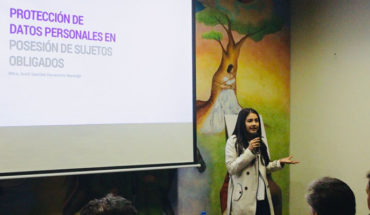The negotiation table that was installed in the halls of the building of the National Congress in Santiago between November 14 and the early morning of November 15, 2019, is what is called in negotiation theory the horizontal dimension of the negotiation process.
The internal dimension is that which was managed by each political bloc with all the differences and divergences within them, since the theory also recognizes that there are no unitary rational actors. Once the consensus and dissent in the internal dimension have been processed, there is a similar dynamic in the horizontal dimension to process and produce the agreements that the parties deem appropriate.
As has been stated several times, there is no November without October. In this sense, the social explosion and the various massive citizen mobilizations in pursuit of a peaceful solution to the crisis of systemic institutional legitimacy unleashed in Chile in 2019, was shaping the space-time of the external dimension to the political negotiation that was processed in the palaces of the constituted power and that made possible the opening of the constituent process underway.
The vertical dimension of the political negotiation and its Agreement for Social Peace and the new Constitution expressed the ratification channels of the political agreement. First, with the plebiscite of entry that was pronounced majority by the majority to provide us with a new Constitution and that this was drafted by a body 100% elected by the popular will, also incorporating the character of parity and with seats reserved for our native peoples.
Now, this September 4, 2022, citizens are again summoned, within the framework of the negotiated political agreement, so that the citizens themselves, through their sovereign vote as mandatory, ratify or not the proposal for a new Constitution presented to the country by the work of the Constitutional Convention in charge of drafting it.
The plebiscitary options are Approve or Reject and, on this citizen decision, the mandate of the political negotiation of November 15 is closed in the case of winning the Approve option, where a new Political Constitution is ratified that replaces the current Constitution emanating from the civic-military dictatorship since 1980, or a new political negotiation is opened – with a high level of uncertainty – in case of winning the Rejection, to continue the constituent process by other ways not yet defined, where we only know wills, but without the gravitational weight of a negotiated agreement between the incumbent parties of the constituted power.
The relevance of the Chilean political process is that a more mature, dialoguing, agile, diverse and aware of the historical moment citizens knows their gravitational weight, both in the external dimension and in the vertical dimension of the political negotiation process. In other words, the constituted power in no case has the last word or final decision on the constituent process in progress, since the demand for ratifications of agreements is unavoidable in chile of the xxi century.
That image of negotiation as a “kitchen” and its negative charge is being left behind as a one-dimensional frame where only the elites or their delegates on duty participate. Surely there will continue to be “kitchens” and “cooks” among the same as always and, eventually, the new elites will also participate in that game as a parlor game, but the citizen demand for greater democracy, participation, dialogue, deliberation and decision place the exercise of political negotiation in a space-time of greater responsibility, transparency and quality of the negotiated agreements.
The vertical dimension of the processes of political negotiation has occurred even in national deliberative instances with supranational impact in other times, such as the “No” of the Danish people to the Maastricht Treaty (1992), for their government to negotiate better conditions for its people, presenting a package of amendments on defense policy, third phase of EMU, cooperation in justice and home affairs, openness and transparency of the decision-making process, to which the Edinburgh European Council accepted that Denmark would not join the third EMU phase or participate in the preparations for the European security and defence policy, recognising Denmark’s right to maintain a stricter social protection policy. That crisis ended on May 18, 1993, when a new referendum gave the Danish “Yes”, with a 56.8%, for its negotiated accession to the European Union. Here we visualize an emblematic case where dissent can generate better and sustainable consensus.
There are also several examples where the external dimension of a negotiation process is manifested through a conscious and empowered citizenry about its rights, well-being and its expectations about the future, resulting in incidents of conflict and negotiation situations, as it was in the case of American public opinion in relation to the vietnam war and the political negotiation between the representatives of the United States and Vietnam that gave it. end the war with the agreement in Paris.
However, the vertical dimension of the negotiation process does not refer only to who has the last word at the decisional level on what is going to be agreed in the horizontal dimension with the counterparts, but also opens a necessary space for the development of institutional intelligence and country intelligence on the analytical processing of scenarios, the design of strategies and the search for advantageous outlets for the parties involved, validating what is going to be signed at the level of ratified agreements.
At the level of participation and decision that occurs in the external dimension of the political negotiation process, issues are defined that may be outside the negotiating agenda of the parties, but that have a significant impact on the process, given the interests, positions, needs and benefits that the parties are processing and adopting when they increasingly assume practices of collaborative innovation and strategic dialogue.
In post-September 4, 2022, negotiators have to be attentive to the configuration and incidence of the diversity of actors that are located around the ongoing constituent process and how they can move or transfer useful information to political negotiation as a semi-private space in terms of climate and climate changes that affect the negotiation space between the parties and the various actors that orbit in around them.
Understanding how the parties involved interact at the different decision-making levels (horizontal-internal-external-vertical) results in having a broad vision of the process and the opportunity to generate solid, flexible, sensitive and sustainable agreements for the set of actors involved in a multidimensional negotiation, exposed to a citizenry that recognizes its gravitational weight and learns the keys to negotiation in all its dimensions.
Follow us on
The content expressed in this opinion column is the sole responsibility of its author, and does not necessarily reflect the editorial line or position of El Mostrador.





